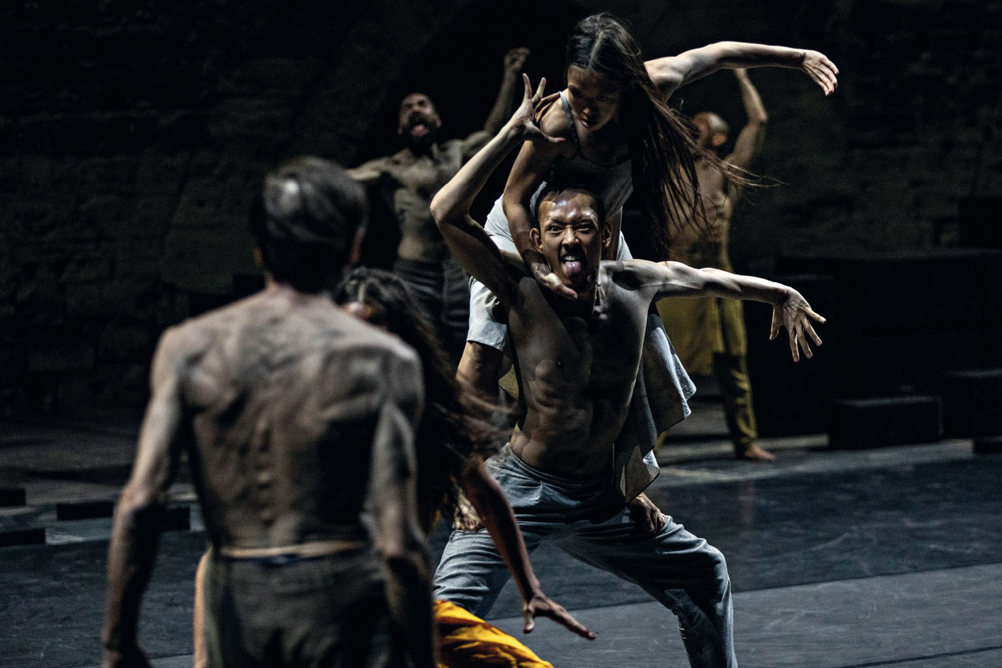
Background
Akram Khan's dance company is 20 this year and there is much to look back on. Khan was born in London in 1974 to a Bangladeshi family and started learning the Indian classical dance form of kathak at 4 years old when his mother taught him. He has created a wealth of work based on his expertise in both kathak and contemporary dance. His teacher Sri Pratap Pawar advised Khan that he could use kathak for modern dance but not the other way around. Some of Khan's many pieces are Until the Lions, Kaash, DESH, Vertical Road, Sacred Monsters, Gnosis and Zero Degrees.
Key features and influences
- He collaborates with other dancers and choreographers to create work that recognises the powerful effect that a combination of singing, acting and dancing can have on storytelling. This was evident in his choreographed section of the 2012 Olympic Opening Ceremony which is a tribute to the loss of 52 lives in the 7/7 London bombings in July 2005
- He relishes a challenge and enjoys working with other disciplines and cultures to create new pieces. He has collaborated with celebrated ballerina Sylvie Guillem, the well-known actress Juliette Binoche and singer Kylie Minogue
- He values artistic input from other artists and has worked with visual artists Anish Kapoor, Antony Gormley and Tim Yip as well as composers such as Steve Reich, Nitin Sawhney, Jocelyn Pook and Ben Frost
- Storytelling is often at the heart of his work. English National Ballet will be performing Khan's Creature at Sadler's Wells between 1 – 8 April this year. This was inspired by Mary Shelley's Frankenstein, Georg Büchner's Woyzeck and the classical myth of Prometheus
- Kathak and contemporary dance
- Other dance forms, for example flamenco
- A wide range of relationships within dance, from solo to ensemble to large scale outdoor performances involving large numbers of dancers.
On Khan's company website we are reminded of the simple formula for creativity: ‘take risks, think big and daring, explore the unfamiliar, avoid compromise and tell stories through dance that are compelling and relevant, with artistic integrity.’
Before trying the following exercises, have a look at a range of Akram Khan's works. There are video links on his company website, on YouTube and Vimeo.
Exercise 1: Mixing dance styles
Choose a dance style, for example ballet, hip hop or jazz. Work out a 32-beat choreography in your chosen style for a group of 4/5 dancers. You can make up more depending on your speed as a choreographer and the skills of the group. Choose a piece of music appropriate for the dance style. When the music changes (maybe in tempo or by going from singing to instrumental), insert a 16-beat choreographed sequence in a different style. This could be kathak, bharatanatyam, tap, flamenco or street. Draw on the skills of your group. You could base the steps on a sport such as basketball, or football warmups. Then repeat the first section of 32 beats.
Exercise 2: Moving body parts
Watch Dust on YouTube. Look carefully at the section where the ensemble moves as one in a type of Mexican wave.
Stand in a line side by side. Choose a middle performer and place him upstage. The line on either side of this performer should now turn to face each other. Performers will be standing with one person in front and one behind them as in the video. Place hands on the elbows of the performer in front. Experiment with moving the arms by controlling the person in front's elbows. Now slowly bend the knees and move to standing. Repeat while moving the arms.
Break into smaller groups and experiment using a different part of the body which you can control and hence move. You can change the level, for example sit on the floor in second position (legs wide apart) and be close to the performers in front of and behind you. Move only the right knee of the person in front using your hand. Experiment with different shapes, for example sitting/standing/kneeling in a circular or triangular formation. Add music by Jocelyn Pook or another artist.
Exercise 3: Cultural heritage
This requires some advance planning and research. Ask the students to explore their family tree and draw it as far back as they can. This might be only 2/3 generations or it might be just one side, for example their mother's family tree. Make this clear in the homework.
The point of the exercise is twofold: to discover different cultural influences and interesting stories which can be told through a combination of acting, singing and dancing. Use acting, mime, movement and music as one student tells a story from their tree using culturally appropriate forms, for example, narrating a story using flamenco singing and dancing about their Spanish great grandmother who had to flee Spain during the Civil War.
To find out more about the Akram Khan company visit: www.akramkhancompany.net/about-us/
